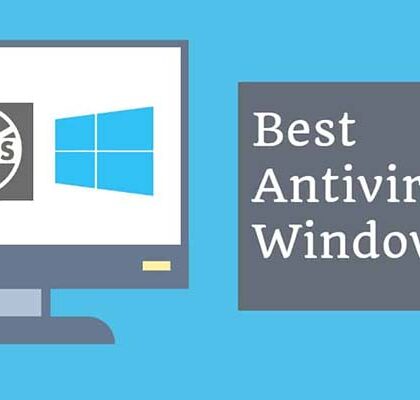Top Level Domains TLD’s:
.com domain
This article is about the generic top-level domain .com. For the file format, see COM file. For other uses, see Dot-com (disambiguation).
The domain name com is a generic top-level domain (gTLD) in the Domain Name System of the Internet. Its name is derived from commercial, indicating its original intended purpose for networks of general commercial character. Due to it’s popularity, some have started to refer to it as the “common” domain, especially with the more recent advent of the “.biz” domain.
The gTLD com was originally administered by the United States Department of Defense, but is today operated by VeriSign. Registrations in com are processed via registrars accredited by ICANN. The registry accepts internationalized domain names.
The domain was one of the original top-level domains (TLDs) in the Internet when the Domain Name System was implemented in January 1985, the others being edu, gov, mil, net, org, and arpa. It has grown into the largest top-level domain.
History
The domain COM was installed as one of the first set of top-level domains when the Domain Name System was first implemented for use on the Internet in January 1985. The domain was administered by the U.S. Department of Defense (DoD), however the department contracted the domain maintenance to SRI International. SRI created DDN-NIC, also known as SRI-NIC, or simply the NIC (Network Information Center), then accessible online with the domain name nic.ddn.mil. Beginning October 1, 1991, an operations contract was awarded to Government Systems Inc. (GSI), which sub-contracted it to Network Solutions Inc. (NSI).
On January 1, 1993 the National Science Foundation assumed responsibility of maintenance, as com was primarily being used for non-defense interests. The NSF contracted operation to Network Solutions (NSI). In 1995, the NSF authorized NSI to begin charging registrants an annual fee, for the first-time since the domain’s inception. Initially the fee was US$50 per year, with US$35 going to NSI, and US$15 going to a government fund. New registrations had to pay for the first two years, making the new-domain registration fee US$100. In 1997 the United States Department of Commerce assumed authority over all generic TLDs. It is currently operated by VeriSign, which had acquired Network Solutions. VeriSign later spun off Network Solutions’ non-registry functions into a separate company which continues as a registrar. In the English language the domain is often spelled with a leading period and commonly pronounced as dot-com, and has entered common parlance this way.
Although com domains were originally intended to designate commercial entities (others such as government agencies or educational institutions have different top-level domains assigned to them), there has been no restriction on who can register com domains since the mid-1990s. With the commercialization and popularization of the Internet, the com domain was opened to the public and quickly became the most common top-level domain for websites, email, and networking. Many companies that flourished in the period from 1997 to 2001 (the time known as the “dot-com bubble”) incorporated the com suffix into company names; these became known as dot-coms or dot-com companies. The introduction of biz in 2001, which is restricted to businesses, has had no impact on the popularity of com.
Although companies anywhere in the world can register com domains, many countries have a second-level domain with a similar purpose under their own country code top-level domain (ccTLD). Such second-level domains are usually of the form com.xx or co.xx, where xx is the ccTLD. Australia (com.au), Greece (com.gr), Mexico (com.mx), South Korea (co.kr), India (co.in), China (com.cn), Japan (co.jp), Malaysia (com.my) and the United Kingdom (co.uk) are all examples.
Many non-commercial sites and networks use com names to benefit from the perceived recognizability of a com domain. However, the registration statistics show varying popularity over the years.
In 2008, VeriSign reported that approximately 77 million com domains were registered. As of March 2009, VeriSign reported that the domain is served by 886 accredited registrars.
Transfer procedures
.com domain
This article is about the top-level domain. For the Microsoft technology, see .com Framework. For other uses, see .com (disambiguation).
The domain name net is a generic top-level domain (gTLD) used in the Domain Name System of the Internet. The name is derived from network, indicating its originally intended purpose for organizations involved in networking technologies, such as Internet service providers and other infrastructure companies. However, restrictions were never enforced and the domain is now a general purpose name space. It is still popular with network operators, and is often treated as an alternate to com.
net is one of the original top-level domains (the other five being com, edu, gov, mil, and org) despite not being mentioned in RFC 920, having been created in January 1985. As of 2009, it is the fourth most popular top-level domain, after com, cn, and de.
VeriSign, the operator of net after acquiring Network Solutions, held an operations contract that expired on June 30, 2005. ICANN, the organization responsible for domain management, sought proposals from organizations to operate the domain upon expiration of the contract. VeriSign regained the contract bid, and secured its control over the net registry for another six years.
Registrations are processed via accredited registrars and internationalized domain names are also accepted.
.org domain
.ORG
The domain name org is a generic top-level domain (gTLD) of the Domain Name System (DNS) used in the Internet. The name is derived from organization.
The org domain was one of the original top-level domains, with com, edu, gov, mil and net, established in January 1985. It was originally intended for non-profit organizations or organizations of a non-commercial character that did not meet the requirements for other gTLDs. The MITRE Corporation was the first group to register an org domain with mitre.org in July 1985.
The domain name org is a generic top-level domain (gTLD) of the Domain Name System (DNS) used in the Internet. The name is derived from organization.
The org domain was one of the original top-level domains, with com, edu, gov, mil and net, established in January 1985. It was originally intended for non-profit organizations or organizations of a non-commercial character that did not meet the requirements for other gTLDs. The MITRE Corporation was the first group to register an org domain with mitre.org in July 1985.
Registrations in the org are processed via accredited registrars worldwide. Anyone can register an org second-level domain.Although org was recommended for non-commercial entities, there are no restrictions to registration. There are many instances of org being used by commercial sites. org was also commonly recommended for use by individuals, although name and info are now alternatives.According to the company’s Dashboard (Domain Name) report, the composition of org is diverse, including cultural institutions, associations, sports/teams, religious, civic, open source software, such as Wiki, Drupal, Joomla, schools, environmental initiatives, social/fraternal organizations, health, legal services, clubs and community volunteer groups. There are also cases where companies or organizations have created sites under org for crisis management.
The org TLD has been operated since January 1, 2003 by Public Interest Registry, who assumed the task from VeriSign Global Registry Services, a division of VeriSign.
Although organizations anywhere in the world may register org domains, many countries, for example, Australia (au), Japan (jp), and the United Kingdom (uk), have a second-level domain with a similar purpose under their own country code top-level domain (ccTLD). Such second-level domains are usually named org or or.
On 17 March 2010, the Public Interest Registry announced that there are over 8 million domain names registered as .org, making it the third largest generic top-level domain (gTLD).





